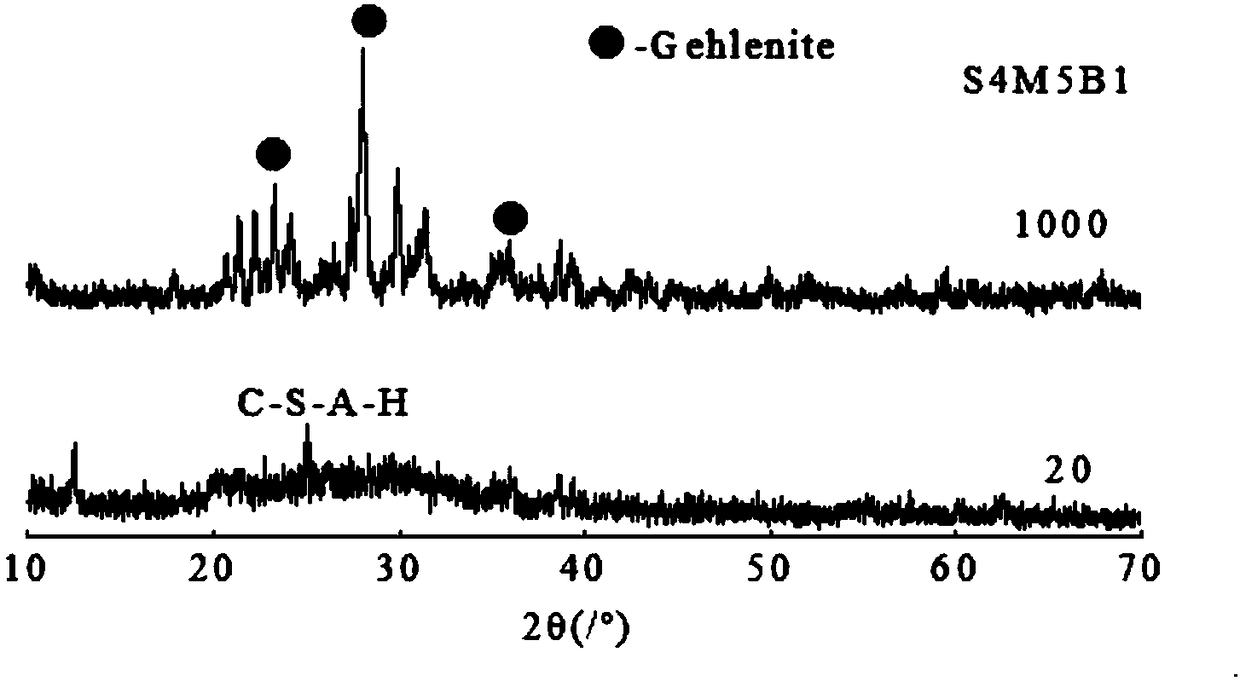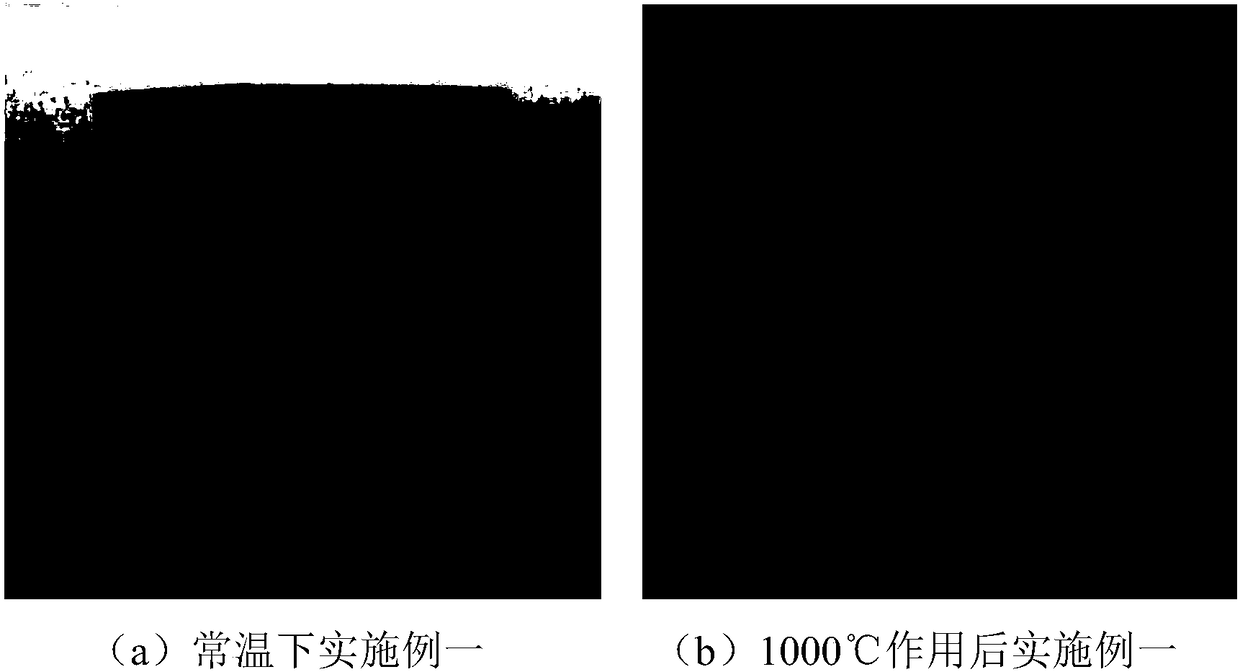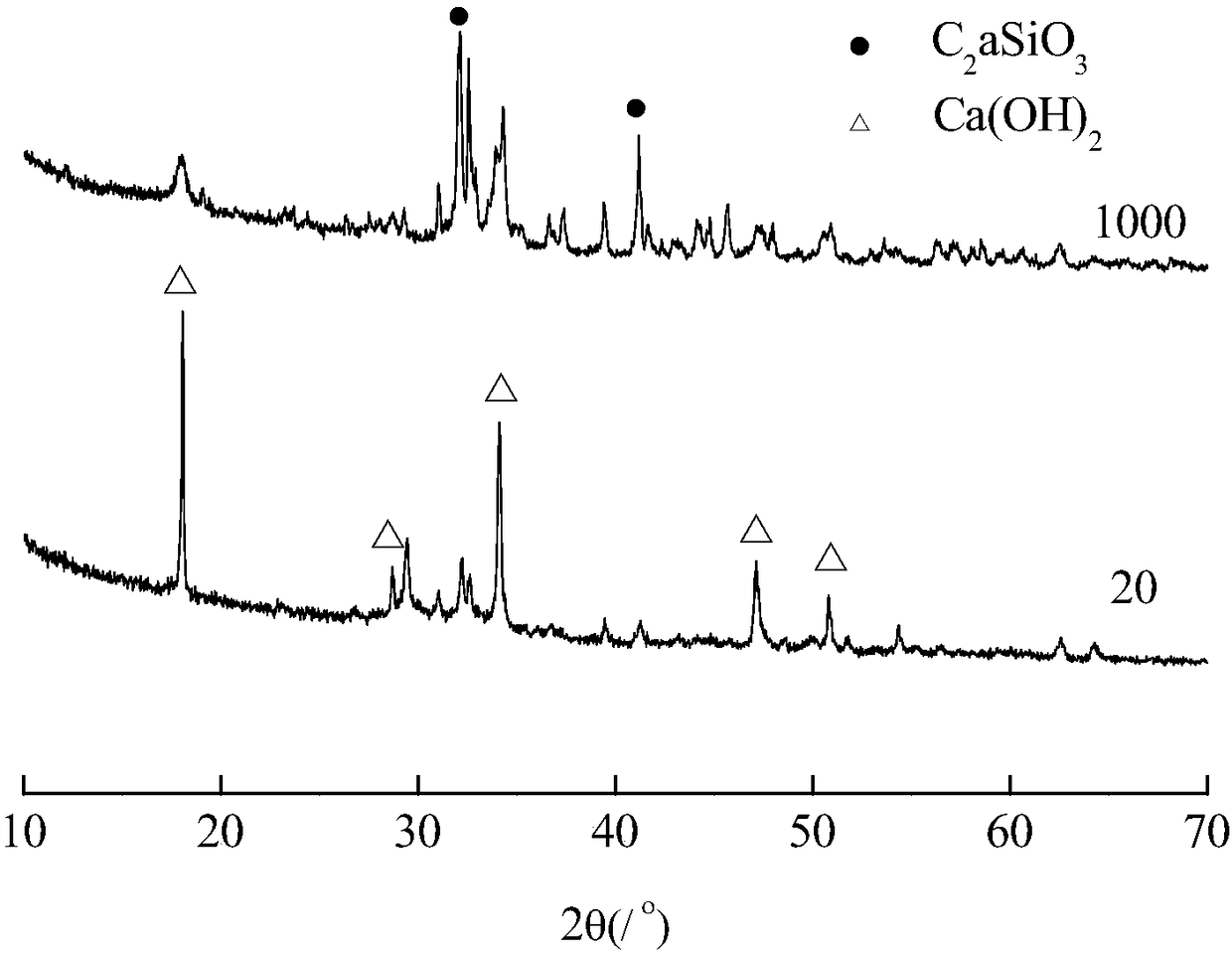High temperature-resistant composite cement-based material and preparation method thereof
A technology of composite cement and base materials, applied in the field of cementitious materials, can solve the problems of cement-based materials such as reduced strength and poor fire resistance, and achieve the effects of increased strength, long setting time, and improved performance
- Summary
- Abstract
- Description
- Claims
- Application Information
AI Technical Summary
Problems solved by technology
Method used
Image
Examples
Embodiment 1
[0033] Weigh the preparations by the following parts by weight:
[0034] The specific surface area is 500m 2 / kg, alkalinity coefficient is 1.1, activity coefficient is 60 parts of slag (the slag with smaller specific surface area can be ground by ball mill);
[0035] The specific surface area is 550m 2 30 parts of metakaolin per kg;
[0036] 10 parts of calcined bauxite whose grade is first-class special grade;
[0037] The specific surface area is 600m 2 5 parts / kg of aluminum hydroxide powder;
[0038] 5 parts of sodium hydroxide;
[0039] 0.00015 copies of 4mm composite ecological fiber;
[0040] 6mm steel fiber 0.002 parts;
[0041] Solid content 45%, modulus is 30 parts of commercially available water glass of 3.3;
[0042] 0.1 parts of YP-3 retarder;
[0043] 26 parts of water.
[0044] Process as follows:
[0045] 1), slowly dissolve 5 parts of the weighed sodium hydroxide in 26 parts of the weighed water, prepare the sodium hydroxide solution, and place it ...
Embodiment 2
[0053] For comparison, ordinary Portland cement specimens were mixed and formed under laboratory conditions:
[0054] Prepare by weight:
[0055] Ordinary 52.5R Portland cement 100 parts;
[0056] 40 parts of water.
[0057] A cube specimen of 40mm×40mm×40mm was prepared from the obtained slurry according to the proportion, and the compressive strength at 28 days of age was 62.5MPa. After 2 hours of high temperature exposure at 1000 ° C, the specimen was destroyed, and the residual strength was 0. See the macroscopic photo and microscopic composition of the specimen. image 3 and Figure 4 .
Embodiment 3
[0059] This implementation case is an embodiment of molding different proportions under laboratory conditions.
[0060] Prepare materials according to the weight in Table 1:
[0061] Table 1 raw material ratio (by mass)
[0062]
[0063]
[0064] In Table 1, the physical properties of the relevant raw materials are shown in Table 2:
[0065] The physical property parameter of raw material in table 2 table 1
[0066]
[0067] The number A in Table 2 represents the material parameters used in the mix ratio of A1-A6 group in Table 1, and correspondingly, B represents the mix ratio of B1-B6 group, and C and D follow this rule.
[0068] Process as follows:
[0069] 1), slowly dissolve the weighed sodium hydroxide in the weighed water, prepare the sodium hydroxide solution, and place it to room temperature;
[0070] 2), take commercially available water glass by weight, the sodium hydroxide solution that will be placed to room temperature is mixed with commercially avai...
PUM
| Property | Measurement | Unit |
|---|---|---|
| specific surface area | aaaaa | aaaaa |
| specific surface area | aaaaa | aaaaa |
| specific surface area | aaaaa | aaaaa |
Abstract
Description
Claims
Application Information
 Login to View More
Login to View More - R&D
- Intellectual Property
- Life Sciences
- Materials
- Tech Scout
- Unparalleled Data Quality
- Higher Quality Content
- 60% Fewer Hallucinations
Browse by: Latest US Patents, China's latest patents, Technical Efficacy Thesaurus, Application Domain, Technology Topic, Popular Technical Reports.
© 2025 PatSnap. All rights reserved.Legal|Privacy policy|Modern Slavery Act Transparency Statement|Sitemap|About US| Contact US: help@patsnap.com



